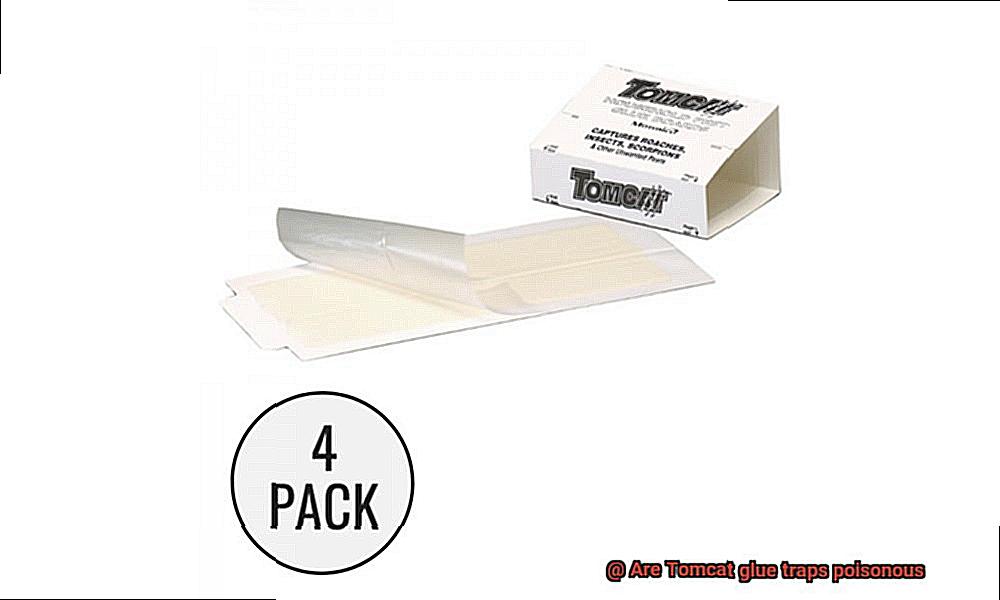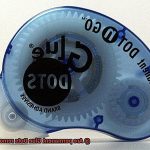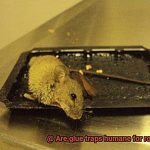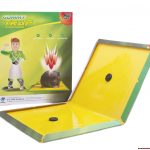In our never-ending battle against pesky intruders, we often resort to quick and easy solutions. Enter Tomcat glue traps – the go-to weapon in our war against pests. These sticky saviors have won over many with their simplicity and accessibility. But behind their innocent facade lies a potential danger that demands our attention. So, are Tomcat glue traps poisonous? This burning question has sparked concerns among consumers who fear the health risks associated with these pest control marvels.
Join us on an eye-opening journey as we uncover the truth about Tomcat glue traps’ hidden hazards. We’ll dive deep into their chemical composition, assess their toxicity levels, and explore how they impact both humans and animals alike. Understanding the full scope of these widely used pest control tools is crucial for making informed decisions about our homes and the well-being of our environment.
Step into the captivating world of pest control with us as we peel back the layers surrounding Tomcat glue traps and their potential dangers. Together, let’s arm ourselves with knowledge so we can become responsible consumers, seeking safer and more humane alternatives to safeguard our homes and loved ones.
What are Tomcat Glue Traps?
Contents
When it comes to dealing with unwelcome pests in your home, Tomcat Glue Traps are a reliable solution. These traps are specially designed to capture and immobilize small animals and crawling insects, using a flat adhesive surface coated with a strong, sticky glue. Once pests make contact with the glue, they become stuck and unable to escape.
Tomcat Glue Traps are commonly used for catching rodents like mice and rats, as well as crawling insects such as cockroaches and spiders. They can be placed strategically in areas where these pests are known to frequent, such as along walls, under sinks, or in attics and basements.
One of the standout features of Tomcat Glue Traps is the highly adhesive glue they employ. This ensures that once a pest becomes trapped, there is no escape. What sets these traps apart from others on the market is that their glue is non-toxic and free from harmful chemicals or poisons. This makes them a safe option for households with children or pets.
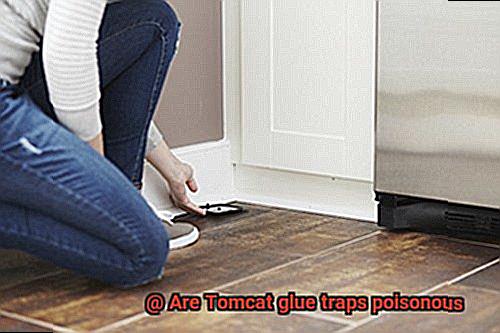
The design of Tomcat Glue Traps is simple yet effective. Constructed from durable materials, they can withstand the weight and struggles of trapped pests. Many of these traps come pre-baited with attractants like food scents or pheromones to entice pests onto the adhesive surface.
It is crucial to handle trapped pests humanely when using Tomcat Glue Traps. Instructions are often provided with the traps on how to safely remove the captured pest without touching the adhesive. This usually involves using gloves or a plastic bag to carefully lift the trap off the ground and place it into a secure trash bag.
How do Tomcat Glue Traps Work?
If you’ve ever found yourself in a battle against pesky rodents invading your home, you know just how frustrating and unsettling it can be. These little creatures always seem to find a way to sneak into your pantry or scurry across your kitchen floor, leaving you feeling uneasy and unclean. But fear not, my friend, for there is a simple and effective solution: Tomcat glue traps.
So, how exactly do these sticky wonders work? Let’s dive into the fascinating world of Tomcat glue traps and uncover their secrets.
Tomcat glue traps are ingeniously designed with a special adhesive surface that is coated with a strong and sticky substance. When a small animal, like a mouse or a rat, comes into contact with the trap, they become ensnared by the powerful grip of the adhesive. Think of it like a fly getting caught in a spider’s web – once they’re stuck, there’s no escaping.
The secret behind the effectiveness of Tomcat glue traps lies in the power of their adhesive. This specially formulated glue is designed to cling onto the fur or body of the trapped animal, immobilizing them completely. The trapped creature finds itself unable to move or escape, making it easier for you, the homeowner or pest control professional, to dispose of it without causing any harm to yourself or the animal.
But wait, I can hear your concerns – is this adhesive safe? Rest assured, the adhesive used in Tomcat glue traps is typically a non-toxic formula that is safe for both humans and pets. However, it’s important to note that while the adhesive itself may not be poisonous, being trapped can lead to distress and potentially harmful consequences for the trapped animal. Thus, it’s crucial to use these traps responsibly and ethically.
When using Tomcat glue traps, there are a few key factors to keep in mind. First and foremost, proper placement is essential. It’s recommended to position the traps along walls or in areas where pests are commonly found. Attics, basements, and pantries are all prime locations for these little critters to make themselves at home. By strategically placing the traps, you increase the likelihood of catching the unwanted intruders.
Regular monitoring is also crucial. Checking the traps frequently ensures that any trapped animals are promptly removed. Leaving them in the glue trap for an extended period can cause suffering, injury, or even death. It’s our responsibility to prioritize the safety and humane treatment of animals, even when dealing with pest control.
Are Tomcat Glue Traps Poisonous?
In this article, we will explore the risks associated with using Tomcat glue traps and provide essential guidance on responsible usage. By understanding the composition of these traps, potential risks to humans and pets, impacts on wildlife, and responsible use and disposal practices, we can make informed decisions to ensure both effective pest control and safety.
Understanding the Composition of Tomcat Glue Traps:
Tomcat glue traps rely on a sticky adhesive surface to capture pests upon contact. This adhesive is crafted using a mixture of synthetic polymers, resins, and tackifiers, designed to create a powerful immobilizing effect. While these ingredients serve their purpose effectively, it is important to note that some of them may have toxic properties if ingested or exposed to for prolonged periods.
Potential Risks to Humans and Pets:
Accidental contact with the adhesive can pose health risks to both humans and pets. The potential outcomes include skin irritation, gastrointestinal problems, and respiratory distress. To prevent such incidents, it is crucial to keep Tomcat glue traps out of reach from children and pets. Placing them in areas inaccessible to unintended targets is an essential step in ensuring their safe usage.
Impacts on Wildlife:
Tomcat glue traps can inadvertently harm non-target animals like birds, reptiles, and small mammals. If these creatures land on or walk over the trap, they can become trapped in the adhesive, leading to injury or even death. It is paramount to consider these unintended consequences when using Tomcat glue traps and take precautionary measures to prevent harm to wildlife.
Responsible Use and Disposal:
To minimize potential harm, it is imperative to use Tomcat glue traps responsibly. Here are some key guidelines to follow:
- Read and follow the manufacturer’s instructions carefully, ensuring proper usage.
- Place traps only in areas inaccessible to children and pets, reducing the risk of accidental contact.
- Regularly check and monitor the traps to promptly remove any captured pests.
- Dispose of the traps and captured pests properly, following local regulations to prevent further harm.
In Case of Accidental Contact:
If accidental contact with the adhesive occurs, immediate medical attention for humans and veterinary care for pets is crucial. Prompt action can help mitigate any potential health risks associated with exposure.
Potential Risks of Using Tomcat Glue Traps
If you’re contemplating the use of Tomcat glue traps to combat critters, it’s crucial to be aware of the potential risks lurking beneath the surface. While these traps are designed to immobilize pests like mice and insects, they can also inadvertently cause harm. Let’s delve into the key concerns surrounding glue traps and explore alternative options that prioritize safety and compassion.
Non-Target Animals in Danger:
One of the most significant risks associated with glue traps lies in their indiscriminate nature. These sticky contraptions don’t discriminate between pests and innocent creatures, putting pets and wildlife at risk. Imagine the heart-wrenching horror of finding your beloved Fido or a beautiful bird ensnared in the unforgiving adhesive. Their struggles can lead to stress, injuries, or even fatal consequences.
Secondary Poisoning Woes:
The dangers of glue traps don’t stop at trapped pests; they extend to predators as well. When trapped animals emit distress signals, they unwittingly attract predators who may end up ingesting toxic substances or becoming entangled themselves. It’s a vicious cycle that we must strive to avoid, ensuring the safety of all creatures involved.
Accidental Human Exposure:

Beware the sticky adhesive on these traps; it can be a real pain—literally. Accidentally touching the glue can lead to skin irritation or allergic reactions. Removing it from clothes or skin becomes an arduous challenge, adding insult to injury.
Improper Disposal Woes:
The risks associated with glue traps don’t end once their mission is complete. Improper disposal of used traps can lead to environmental contamination, posing a grave danger to wildlife and pollinators. Adhering to local regulations and responsibly disposing of these traps is essential to prevent further harm.
Ethical Considerations:
Critics argue that the prolonged suffering endured by trapped animals is inhumane. As compassionate beings, it’s worth considering alternative pest control methods that prioritize the well-being of all creatures involved. By adopting humane practices, we can manage pest problems without sacrificing innocent lives.
How to Use Tomcat Glue Traps Safely
Glue traps are a popular choice for catching and controlling pests like mice and rats. However, it’s important to use them safely to avoid causing harm or danger. Here are some guidelines to help you use Tomcat glue traps safely:
Place the traps out of reach
To keep your pets and children safe, make sure to put the traps in areas they can’t access. You can place them in high or hidden spots, or use bait stations that prevent direct contact with the trap. This way, you can catch pests without risking harm to your loved ones.
Regularly check the traps
It’s crucial to check the traps regularly to ensure any trapped animals are dealt with humanely and promptly. If you find a live animal caught in the trap, don’t panic. Simply apply vegetable oil or a similar substance to gently free it from the glue. Then, release it far away from your trapping area to prevent it from coming back.
Dispose of used traps properly
Used glue traps should be disposed of carefully because they may still contain traces of glue that can be harmful if ingested by other animals. Double-bag the used trap in a plastic bag before throwing it away in an outdoor trash bin.
Follow the manufacturer’s instructions
Always read and follow the instructions provided by the manufacturer. They will have important safety information and guidelines for using the glue traps effectively and safely.
Use protective gloves
When setting up the traps, wear protective gloves to prevent adhesive from getting on your skin. This will keep your hands safe and minimize any potential risks.
What to Do if a Pet or Child Comes in Contact with a Glue Trap
Glue traps are sticky devices designed to catch pests like mice, rats, insects, and spiders. While they are effective at catching these little critters, they can also pose a danger to pets and children if they come in contact with them. If you find yourself in this situation, it’s important to remain calm and act quickly to minimize any harm or distress. Here are some steps you can take to help your furry friend or little one:
Step 1: Gently Remove from the Trap
The first step is to gently remove the pet or child from the glue trap. It’s important not to pull forcefully, as this can cause more injury or discomfort. Try to lift them off the trap using a slow and steady motion. If the trap is stuck to their fur or skin, don’t worry, there’s still more you can do.
Step 2: Loosen the Adhesive
If the glue trap is stuck, it’s best to use a lubricant such as vegetable oil or petroleum jelly to help loosen the adhesive. Apply the lubricant around the edges of the trap and slowly work it into the affected area. Be careful not to pull or tug on the trap while doing this.
Step 3: Peel Back the Trap
Once the adhesive has been loosened, gently peel back the trap from the fur or skin. It may be helpful to have someone assist you in holding the pet or child steady during this process. Take your time and be gentle to avoid causing any further distress.
Step 4: Clean the Area
After removing the glue trap, thoroughly clean the affected area with warm soapy water. This will help remove any remaining adhesive residue. Rinse well and pat dry.
Step 5: Seek Medical Attention if Needed
If there are any signs of injury or irritation, it’s important to seek immediate medical attention. Look out for redness, swelling, pain, or difficulty breathing. Don’t hesitate to reach out to a veterinarian or healthcare provider for guidance.
Step 6: Prevent Future Accidents
After dealing with a glue trap incident, it’s crucial to take steps to prevent future accidents. Store glue traps in areas that are inaccessible to pets and children, such as locked cabinets or high shelves. Consider using alternative pest control methods that are safer for everyone involved, like snap traps or humane catch-and-release traps.
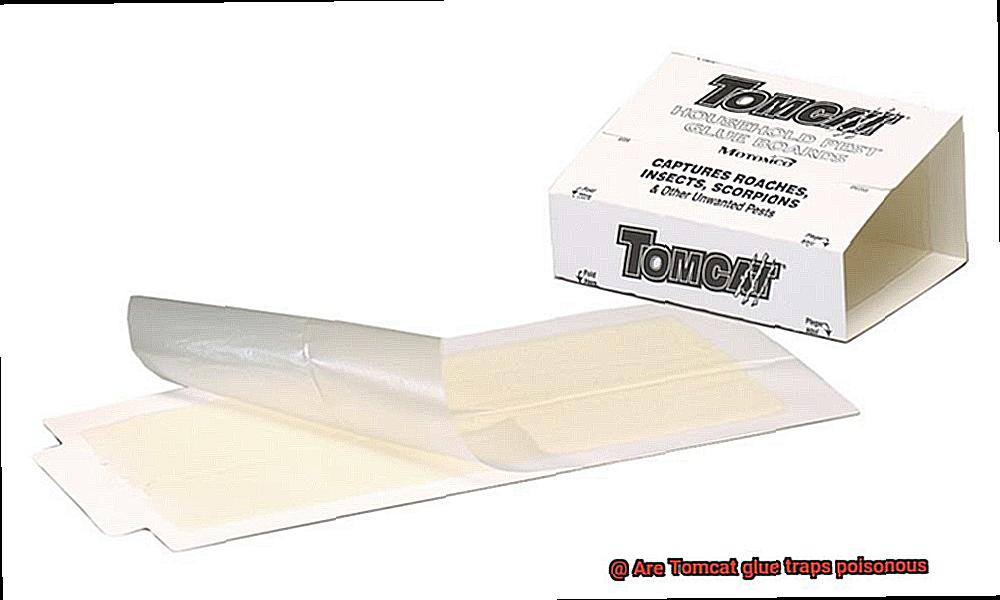
Alternatives to Tomcat Glue Traps
Well, you’re in luck. In this article, we will explore some humane alternatives to Tomcat glue traps that effectively control rodent populations while minimizing harm to animals. Let’s dive in.
Live Traps: Capture and Release
Capture rodents without causing harm with live traps. Once trapped, you can safely release them back into their natural habitat away from human dwellings. This method eliminates the risk of injury or death caused by glue traps.
Snap Traps: Quick and Humane
Consider using snap traps as a more humane alternative. These traps are designed to quickly and humanely kill rodents upon activation. While some may still find this method harsh, it is widely accepted as an effective and quick solution.
Electronic Rodent Repellents: Unpleasant Sound Waves
Opt for electronic rodent repellents for a non-lethal approach. These devices emit high-frequency sound waves that are unpleasant for rodents, causing them to seek out alternative areas away from the device. This method is safe for both rodents and other animals.
Integrated Pest Management (IPM): Prevention is Key
Adopt Integrated Pest Management (IPM) techniques as an alternative to using glue traps. IPM involves a combination of pest prevention strategies, such as sealing entry points, removing food sources, and maintaining cleanliness to discourage rodent infestations. This approach addresses the root cause of the problem and minimizes the need for trapping.
Conclusion
In conclusion, it is crucial to handle Tomcat glue traps with care to avoid potential dangers and risks. While the adhesive itself is generally safe for humans and pets, accidental contact can still result in skin irritation or allergic reactions. Moreover, these traps do not discriminate and can harm unintended victims such as birds, reptiles, and small mammals.
To ensure the safe use of Tomcat glue traps, it is essential to meticulously follow the manufacturer’s instructions and place them out of reach of children and pets. Regularly monitoring the traps is vital to promptly release any captured pests and prevent their prolonged suffering. Proper disposal of used traps is also necessary to prevent environmental contamination.
Considering the potential risks associated with glue traps, it is worth exploring alternative pest control methods that prioritize safety and compassion. Live traps offer a humane way to capture and release rodents without causing harm. Snap traps provide a quick solution for rodent control while still being humane. Electronic rodent repellents emit sound waves that deter rodents without harming them or other animals. Integrated Pest Management (IPM) techniques focus on prevention through sealing entry points, removing food sources, and maintaining cleanliness.

